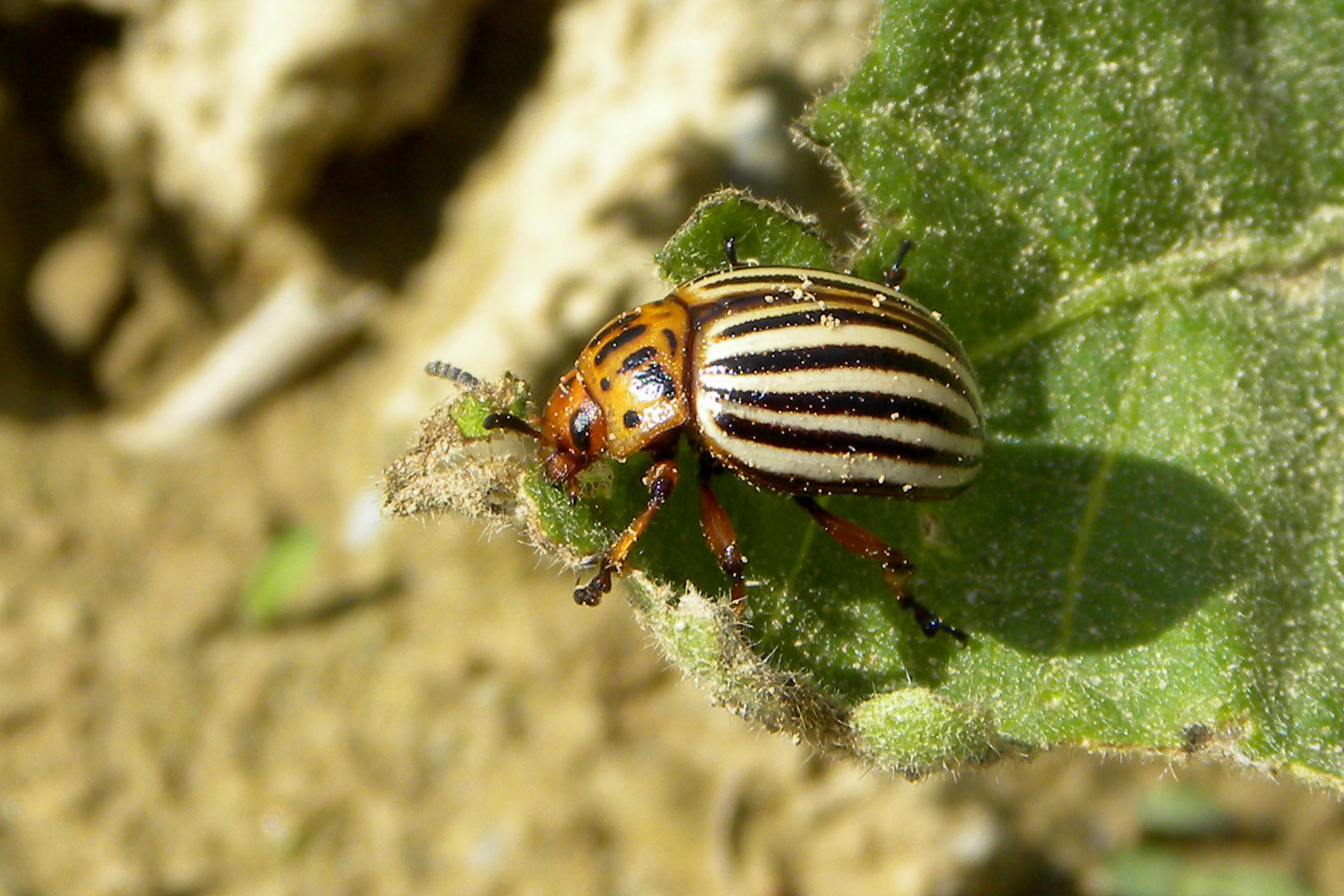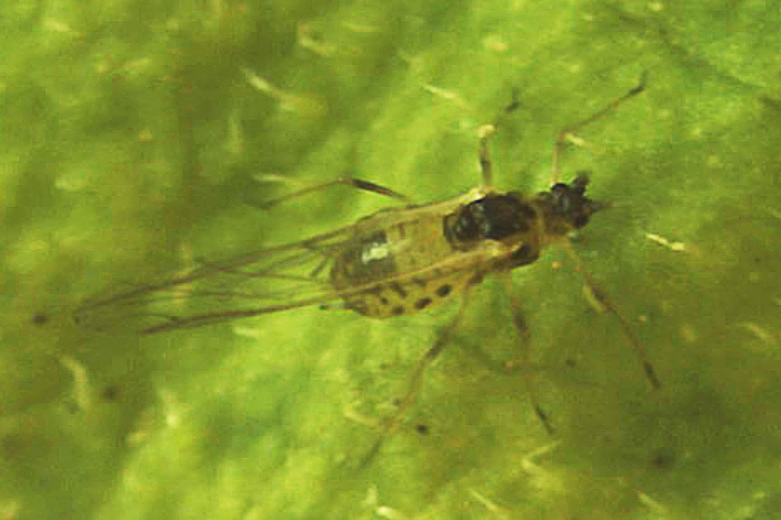
The striped Colorado potato beetle is one of the most notorious destroyers of potato plants, but it isn’t the only bug that plagues Maine farmers and gardeners.
From pesticide application using GPS technology, to soil management and environmentally controlled storage, growers have more tools than ever to manage threats to the crop.
But there are always insects, and some are thriving this year. It feels like there’s no end in sight, according to a weekly grower newsletter issued by the University of Maine Cooperative Extension. As the climate changes, warmer winters can keep some from dying off, leading to healthy numbers in the spring. Potato pests can eat plants, spread viruses and affect the yield and quality of Maine’s No. 1 food crop.
“The smaller insects move easily on storm fronts, of which we’ve had several,” said Jim Dill, Extension pest management specialist. “Colorado’s had a mild winter, so the population was high coming out of hibernation.”
Colorado potato beetles and aphids are abundant this year, and aphids could be flourishing due to heavy winds from rain storms that carry the tiny insects, Dill said. On the other hand, potato flea beetles and European corn borers, which eat and lay eggs on plants, are lower in number.
It’s hard to quantify damage at this point, Dill said. As long as growers are regularly treating their crops, Extension scouts aren’t seeing much damage. Untreated potatoes may not show some of the effects until after harvest.
Treatment, including preventative spraying, is important to keep the crop healthy. The Extension publishes the Potato Pest Alert weekly during the growing season. Along with insect and disease scouting reports, it recommends treatments and how often to apply them.
Dill and three others create the newsletter. Sean McAuley, scientific technician, oversees plant scouting in central Maine and Aroostook County. I. Kutay Ozturk, potato pathologist, provides updates on disease, while Griffin Dill, integrated pest management professional, produces the document.
“Growers read our pest alert and, as we mention pests in central Maine, they start looking for them in Aroostook,” Dill said. “If found [they] spray either synthetic or organic materials depending on the farm.”
Aphids have increased further this week, especially in northern Aroostook, stated the Aug. 23 alert, the last one for the season.

Green peach aphids are a problem because they transmit viruses, like potato virus Y, to potato plants. Other common varieties are potato, buckthorn and foxglove aphids, said Andrew Plant, potato pathologist and lab manager for the Maine Potato Board. The tiny pests are about 1/8 inch long.
Potato virus Y is the potato industry’s most concerning virus because it can affect both plants and tubers, and too much of it can reduce crop yields.
There are two major types of aphids, Plant said. Non-colonizing aphids flit around and probe plants with their needle-like mouthpieces to see if they like them. If they probe a virus-infected plant, they’ll contaminate other plants they touch. Colonizing insects, including green peach aphids, move in and feast.
“They can cause direct damage to the crop just from excessive feeding,” Plant said. “Their populations can grow quite large in a short period of time and kill potato plants.”
Infected plants have to use their energy to fend off the virus, rather than grow potatoes. Depending on the variety, the virus can cause brown discoloration on or inside potatoes, he said.
Preventive spraying helps. Refined mineral oils have been successful because they wash off virus particles on an aphid’s mouthpiece, hopefully preventing transmission into another plant, he said.
Colorado potato beetles, measuring about 3/8 inch long, have plagued farmers for decades. They feast on potato, eggplant and tomato leaves, sometimes defoliating the plants, and an adult female can lay up to 800 eggs, according to the Extension.
The insects can eat a lot — one beetle can eat up to 50 square centimeters of leaves a day — but they’ve also developed resistance to many pesticides used since 1864. Pesticides are the best treatment, specialists said.
If the beetles were left untreated, there’d only be sticks left for potato plants, Dill said.
Beetles start to wind down in late summer but can surge just before farmers kill potato tops.
The best organic tool is crop rotation, according to a fact sheet from the Maine Organic Farmers and Gardeners Association. Potatoes or eggplant should be planted at least 200 yards from the previous year’s fields, the document stated.
MOFGA recommends early or late planting to avoid the insects’ major feeding seasons, or, if necessary, pesticides approved for use in organic operations.
The Extension also tracks the fungal disease late blight, which causes discolored spots on leaves and in potatoes.
Late blight was found recently in a Presque Isle field. Specialists urged growers to continue spraying fungicides regularly.
“We are actively monitoring the situation and have not found more late blight infections,” said Ozturk.
He encouraged home gardeners also to watch their potato and tomato plants for signs of the disease, and to reach out to the Extension for help.







